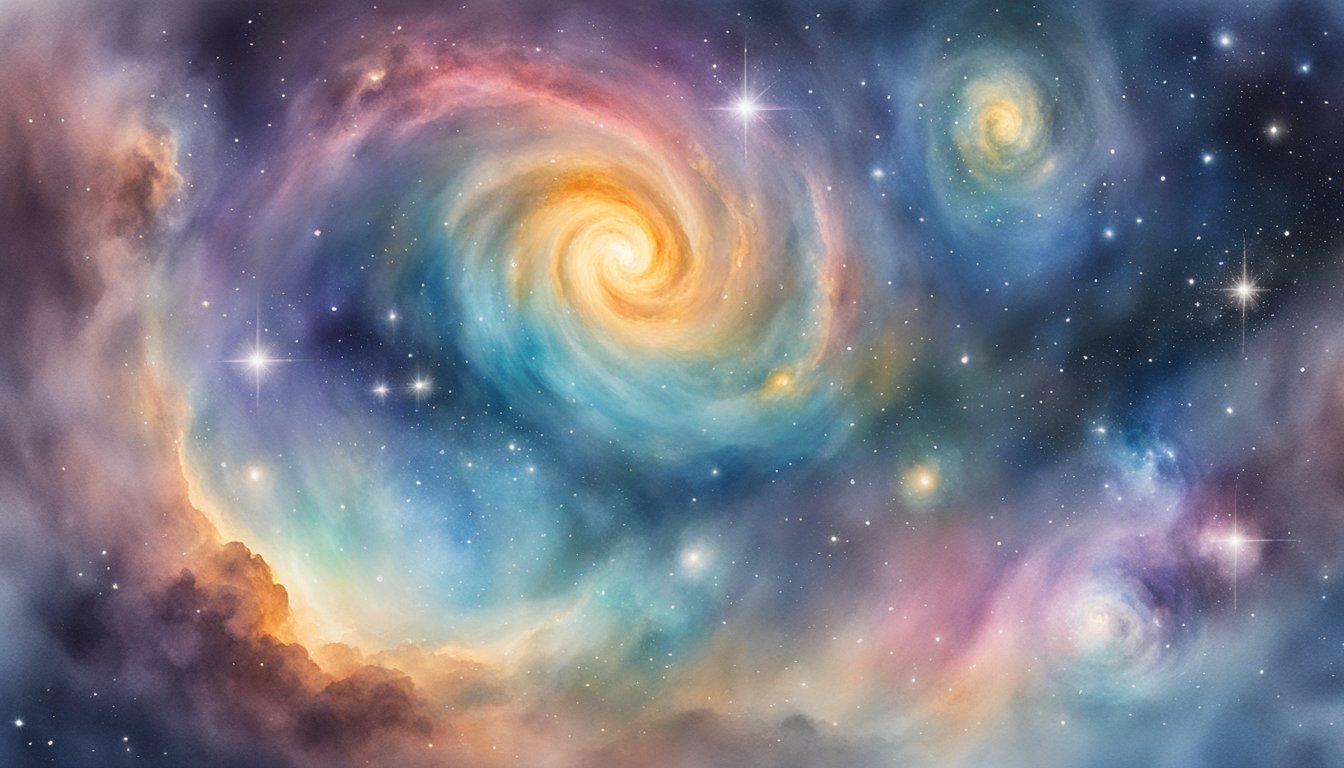Understanding Galaxies
Formation and Evolution
Galaxies are massive cosmic systems composed of stars, dust, gas, and dark matter, with various shapes and sizes. They formed after the Big Bang through the cooling and collapse of gas clouds, which eventually led to star formation.
Throughout time, galaxies have evolved by merging and interacting with one another or through internal processes such as star formation and consumption of gas and dust. The process of galaxy evolution is still ongoing, and astronomers are constantly discovering fascinating facts about these majestic cosmic structures.
Types and Classification
There are three main types of galaxies: elliptical, spiral, and dwarf galaxies.
-
Elliptical galaxies have a smooth, rounded appearance with a lack of distinctive structure. They are usually composed of older stars and have little gas and dust for new star formation. Elliptical galaxies range in size and can be found in isolation or as part of galaxy clusters.
-
Spiral galaxies, like our own Milky Way, have a central bulge of old stars surrounded by a flat disk of younger stars, gas, and dust. They have multiple spiral arms that extend from the central bulge, where star formation primarily occurs.
-
Dwarf galaxies are smaller and less massive than their counterparts, containing only a few million to several billion stars. They can be elliptical or irregular in shape, and often orbit larger galaxies, like our neighboring Large and Small Magellanic Clouds.
Another notable type is the lenticular galaxy, which shares properties of both elliptical and spiral galaxies, having a central bulge but lacking prominent spiral arms.
Galactic Structure and Components
The main components of galaxies include a central bulge, a halo, and, in some cases, spiral arms:
- The bulge is a dense and tightly packed region of stars at the core, which is predominantly composed of older stellar populations.
- The halo surrounds the bulge and contains a mix of globular clusters and dark matter. The presence of dark matter is inferred through its gravitational effects on visible matter within the galaxy.
- Spiral arms are composed of young stars, gas, and dust, which makes them regions of ongoing star formation. These arms often contain stellar systems such as nebulae.
The size of a galaxy is typically measured in light-years, representing the distance that light travels in a year. Galaxies can be as small as a few hundred light-years across to more than a million light-years in diameter. Their mass also varies greatly, with the largest galaxies containing trillions of stars.
In conclusion, understanding galaxies helps scientists unravel the mysteries of the universe and provides insights into its complex structure, evolution, and the origin of stars and other celestial bodies.
Galactic Phenomena and Observation

In this section, we will explore the fascinating world of galaxies and the cosmic phenomena associated with them.
Discoveries and Research
Galaxies are vast systems made up of stars, gas, dust, and dark matter, all held together by gravity. Their sizes and shapes vary, and they can be classified into spiral, elliptical, and irregular categories1. The Milky Way, our very own galaxy, is a beautiful example of a spiral galaxy.
Edwin Hubble and Harlow Shapley contributed greatly to the study of galaxies. Hubble’s work on Cepheid variables enabled him to determine distances to other galaxies and expand our understanding of the observable universe2. Research in astronomy has led to the discovery of various phenomena such as supermassive black holes, quasars, and the Magellanic Clouds3.
Galactic Interactions
One key aspect of galactic phenomena is the interaction between galaxies. As they move through space, they’re affected by the gravitational forces of nearby galaxies, often leading to collisions and mergers4. Our Milky Way will eventually merge with the Andromeda galaxy5. These intermingling events can cause gases to flow towards the centers of galaxies, triggering activities like rapid star formation6.
Some other interesting interactions include the formation of superclusters and voids, which are vast empty regions in the universe where galaxies are relatively scarce7. The Laniakea and Virgo superclusters and the Virgo Cluster are fascinating examples of these structures8.
Tools and Techniques for Observation
The science of observing and analyzing galaxies has come a long way since the first telescopes were invented. The Hubble Space Telescope has been especially instrumental in unveiling the beauty and diversity of various galaxies9. It has enabled astronomers to study giant ellipticals, active galaxies, and even the breathtaking jets of matter ejected from galaxies.
With continuous advancements in technology, scientists are now better equipped to examine galaxies, their formations, and their interactions with each other. This invaluable knowledge not only enriches our understanding of the universe but also deepens our appreciation for its expansive beauty.

